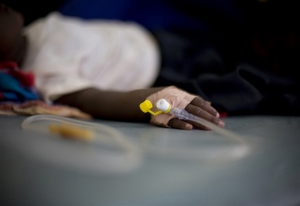Every Somali citizen will have access to basic healthcare by 2016 if a new, government-led strategic plan achieves its aims.
The launch on 21 March of new Health Sector Strategic Plans (HSSPs) for Somalia’s three zones – south-central Somalia, Puntland and Somaliland – indicates a move away from the emergency-level health provision that has been the norm in the country for over 20 years and towards more mainstream, national health systems.
“The strategic planning process leading to this result is a clear indication of the beginning of a new time, a time of good governance and re-building of systems,” Mariam Qasim, Somalia’s Minister for of Human Development and Public Services, said at the launch, adding that the implementation of the plan would be a “litmus test” of the government’s ability to provide services to its population.
Somalia has some of the highest rates of maternal mortality in the world, and thousands of infants and children succumb annually to easily preventable and treatable conditions such as pneumonia, diarrhoea, malnutrition and measles.
Starting anew
The country’s health system was virtually destroyed by more than 20 years of conflict, during which time there was no legitimate government; during the war, NGOs, the UN and private sector practitioners managed healthcare.
“The major change is government ownership of the HSSP,” said Marina Madeo, the coordinator of the Somali health sector. “By 2016, we hope that in every part of the country, health centres will be equipped with drugs, equipment and health workers.”
She noted that for now, as the government continued to build its ability to handle healthcare, large parallel health programmes such as immunization would continue to be handled by UN agencies. The government and its partners will also seek public-private partnerships with the country’s vibrant private health sector.
The HSSPs are expected to make improvements to health financing, human resources for health, drugs and the country’s health infrastructure, among other things. The four-year strategies are expected to cost US$350 million, 70 to 75 percent of which will be spent on actual health services. Some $50 million has already been raised; key donors include the Australian, Swedish, UK and US governments.
Marthe Everard, UN World Health Organization representative for Somalia, stressed that “all national and international investments in the health sector should be guided by these plans, which provide the basis for cooperation, harmonization and alignment of all support to the Somali health sector”.
Security
Although much of Somalia is now secure, Islamist insurgents still control parts of south-central Somalia. Qasim said she hoped security would continue to improve, and that in the interim “there are always ways” to work in Al-Shabab-controlled areas.
“We can’t wait for everything to be in place [to] secure to start working,” said Madeo.
Source: IRIN

No comments:
Post a Comment